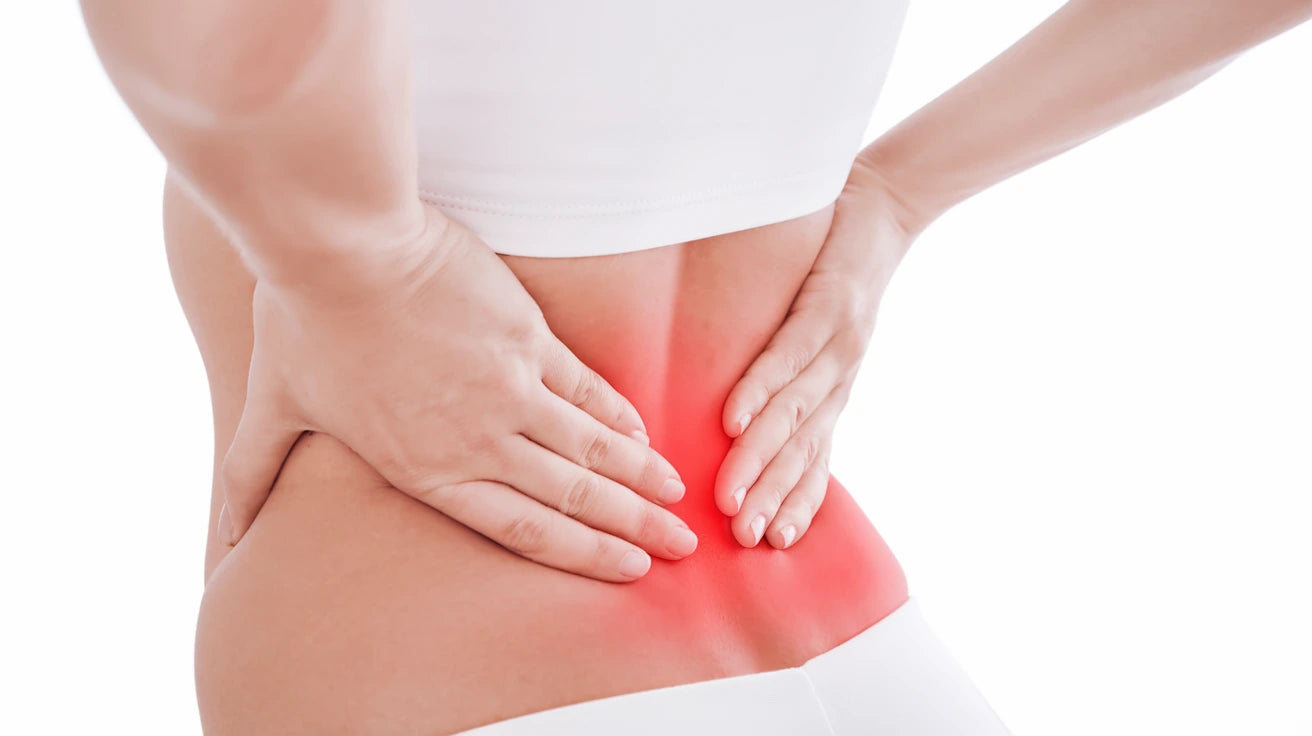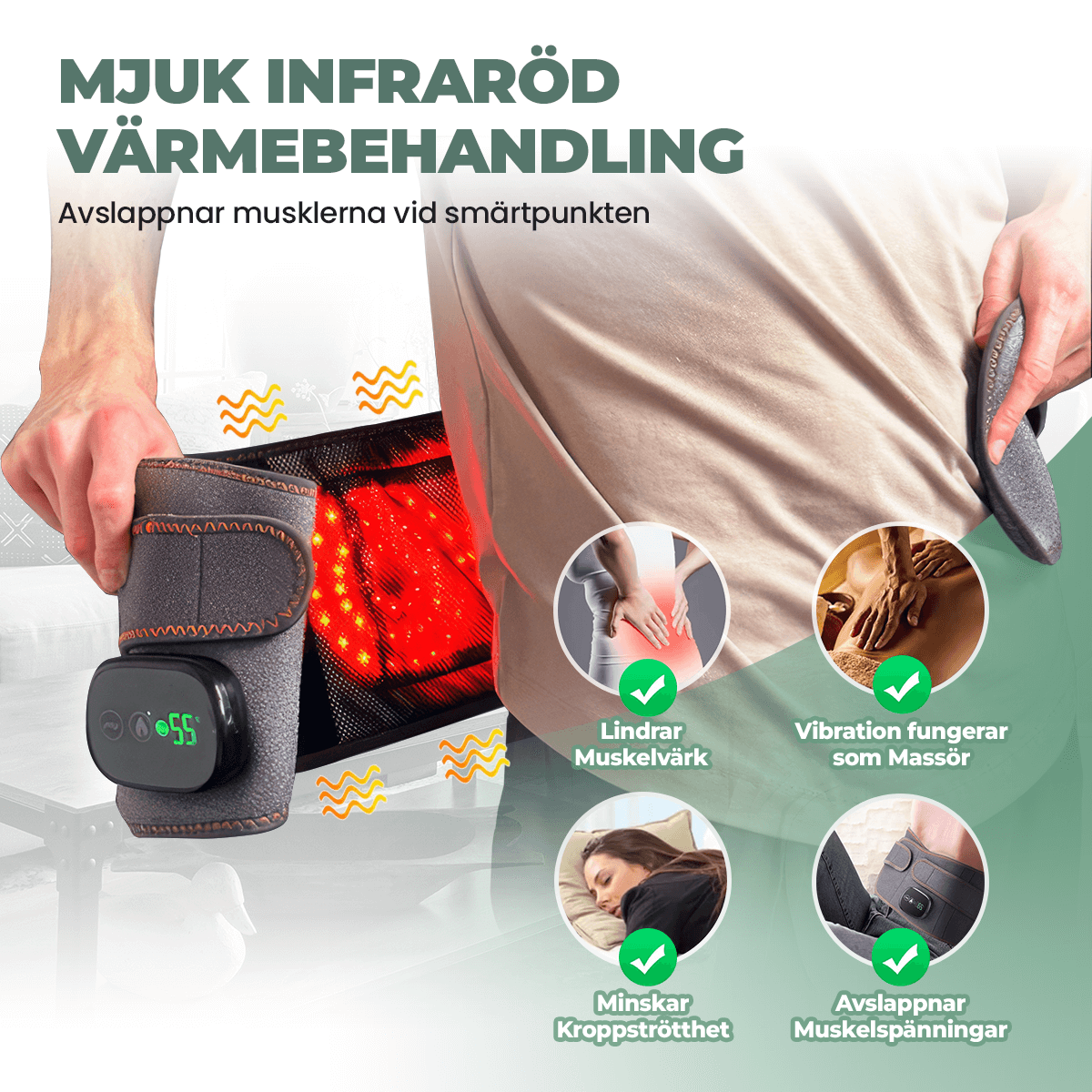Nerve Pain in the Back: Symptoms, Causes, and Treatment

Back nerve pain is a type of pain caused by irritation or compression of nerve roots in the spine. This article reviews the most common symptoms, causes, and treatment options for back nerve pain.
What is nerve pain in the back?
Nerve pain in the back occurs when a nerve becomes irritated or damaged, often due to a herniated disc or pressure from surrounding tissue. This results in radiating pain, numbness, and tingling, which requires early treatment to relieve the discomfort .
Symptoms of nerve pain in the back
Common symptoms include:
- Pain radiating from the back down the legs
- Numbness and tingling in the legs and feet
- Weakness in the legs
- Burning or stabbing pain
- Pain that worsens with certain movements or positions
Nerve pain in the back can be very intense and often causes radiating pain that runs along the nerve pathways, for example from the lower back down the leg (also called sciatica). Many people also experience decreased sensation or difficulty walking when the pain is at its worst. Unlike regular back pain, nerve pain can often be described as burning, electrical or stabbing and can affect the entire body depending on which nerves are affected, which is similar to sciatica in the back .
Causes of nerve pain in the back
Several factors can contribute to nerve pain in the back:
- Herniated disc
- Spinal stenosis (narrowing of the spinal canal)
- Age-related changes in the spine
- Injuries or trauma to the back
- Inflammation of the spine
Back pain with nerve involvement often occurs when the discs between the vertebrae in the spine become damaged or displaced, pressing on surrounding nerve fibers. In the thoracic spine, nerve pain can be caused by problems with the vertebrae that affect the nerves that run around the chest. Long-term pain can lead to changes in the nervous system that make the pain chronic and more difficult to treat. It is therefore important to seek care early for symptoms of nerve pain from the back down to the pelvic floor or down to the legs, especially if you also experience pain in the lower back .
Diagnosis and treatment of nerve pain in the back
Nerve pain in the back (also called nerve root pain or sciatica-like symptoms) often occurs when a nerve becomes irritated or pinched.
This can lead to pain that radiates into the legs, numbness, or weakness. An accurate diagnosis and tailored treatment are crucial for relieving the symptoms and regaining mobility.
Physical examination
The doctor or physical therapist assesses the mobility and muscle strength of the back to determine the cause of the pain.
Advantage of RyggKomforten™: Provides stability and support that reduces strain on the lower back.
MRI or CT scan
Imaging is used to identify nerve compression, herniated discs, or other changes in the structure of the spine.
Advantage of RyggKomforten™: Helps maintain proper posture during rehabilitation.
Nerve conduction test
This test measures how well the nerves are functioning and can show where irritation or blockage is occurring.
Advantage of Termoreliever™: Can be used as heat or cold therapy to relieve pain and reduce inflammation.
X-ray
Shows changes in the skeleton and can be used to rule out other causes of back pain.
Advantages of RyggKomforten™: Relieves pressure on the spine and supports natural recovery.
Recommended treatment
For nerve pain in the back, a combination of rest, physical therapy, and anti-inflammatory medication is often recommended.
A physical therapist can show you exercises that strengthen the back and abdominal muscles, improve mobility, and reduce pressure on the nerve roots.
Termoreliever™ can provide local relief through heat or cold, while RyggKomforten™ offers support in everyday life and reduces the risk of recurring problems.
Important to consider
Prolonged nerve pain in the back should always be investigated by healthcare professionals.
Treatment focuses on reducing pressure on the nerves and improving the body's movement patterns without aggravating the symptoms.
In cases of severe pain, medications that affect the nervous system's signals may be prescribed.

How Back Comfort™ and Termoreliever™ can help with nerve pain in the back
BackComfort™ and Termoreliever™ offer several benefits for people with nerve pain in the back:
- Back Comfort™ provides support and stability to the spine.
- Termoreliever™ can be used for both heat and cold therapy
- The combination helps improve posture and reduce strain on the nerves
- Can be used as a complement to other treatment methods
- Contributes to faster recovery and reduced risk of relapse
For people suffering from nerve pain, aids such as the BackComfort™ can be particularly valuable as they can relieve the areas of the back where the nerve is pinched. This can help reduce pressure on the spinal cord or nerve roots, thereby relieving the pain that radiates throughout the body. Termoreliever™ can be used to reduce inflammation around affected nerves and improve circulation in the area, which can speed up the healing process. Similar relieving effects can also be important for stiff backs .
Buy nowConclusion
Back pain can be a very painful and limiting condition, but with the right diagnosis and treatment, most people can experience significant improvements. By combining medical treatments, physiotherapy and the use of supportive aids such as Back Comfort™ and Termoreliever™, many people can effectively manage their symptoms and improve their quality of life. It is important to consult a doctor for a correct diagnosis and individual treatment plan. In cases of combined problems from both the neck and back, it may also be useful to read about stiff neck .
Frequently Asked Questions (FAQ)
How long does nerve pain in the back usually last?
The duration varies, but with the right treatment, many people can experience improvement within a few weeks to months.
Can I exercise with nerve pain in my back?
Light exercise and specific exercises can often be beneficial, but consult a physical therapist for a customized program.
How do I use Termoreliever™ for nerve pain in the back?
Use cold therapy to reduce inflammation and heat therapy to increase blood circulation and reduce stiffness. Follow the product instructions and consult your doctor.
Can BackComfort™ prevent nerve pain in the back?
By providing support and improving posture, BackComfort™ can help reduce the risk of nerve compression and related pain, which can also relieve muscle tension in the neck .
When should I seek emergency medical attention for nerve pain in my back?
Seek immediate medical attention if you experience sudden, severe pain, loss of bladder or bowel control, or significant weakness in your legs.

